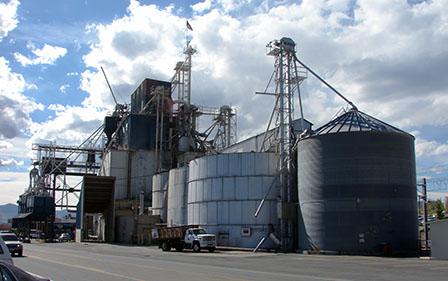Grain Mills Effluent Guidelines
 EPA initially promulgated the Grain Mills Effluent Guidelines and Standards (40 CFR Part 406) in 1974 and 1975 and amended the regulation between 1975 and 1986. The regulation covers direct
EPA initially promulgated the Grain Mills Effluent Guidelines and Standards (40 CFR Part 406) in 1974 and 1975 and amended the regulation between 1975 and 1986. The regulation covers direct![]() direct dischargerA point source that discharges pollutants to waters of the United States, such as streams, lakes, or oceans. and indirect
direct dischargerA point source that discharges pollutants to waters of the United States, such as streams, lakes, or oceans. and indirect![]() indirect dischargerA facility that discharges pollutants to a publicly owned treatment works (municipal sewage treatment plant). dischargers. The Effluent Guidelines and Standards are incorporated into NPDES permits for direct dischargers and permits or other control mechanisms for indirect dischargers (see Pretreatment Program).
indirect dischargerA facility that discharges pollutants to a publicly owned treatment works (municipal sewage treatment plant). dischargers. The Effluent Guidelines and Standards are incorporated into NPDES permits for direct dischargers and permits or other control mechanisms for indirect dischargers (see Pretreatment Program).
What is the Grain Mills Industry?
The industry comprises grain operations in several product segments:
- Cereal grains. Corn, wheat, and rice milling and processing are covered in the Part 406 regulation.
- Animal feed
- Breakfast cereal manufacturing
- Wheat starch and gluten manufacturing
- 311119: Other Animal Food Manufacturing
- 311211: Flour Milling
- 311212: Rice Milling
- 311221: Wet Corn Milling
- 311230: Breakfast Cereal Manufacturing
Wastestreams
The industry's principal wastestreams are:
- In multiple subcategories:
- grain cleaning
- cooking
- In corn wet milling plants:
- modified starch washing
- condensation from steepwater evaporation
- syrup refining
Regulated Pollutants
- BOD5
- TSS
- pH
Regulation Subcategories
- Corn Wet Milling
- Corn Dry Milling
- Normal Wheat Flour Milling
- Bulgur Wheat Flour Milling
- Normal Rice Milling
- Parboiled Rice Processing
- Animal Feed
- Hot Cereal
- Ready-to-Eat Cereal
- Wheat Starch and Gluten
Rulemaking History
Amendments
- BCT amendments:
- Revised methodology documents:
- Final Rule (July 9, 1986)
- Proposed Rule (October 29, 1982)
- Initial methodology documents:
- Final Rule (August 29, 1979)
- Proposed Rule (August 23, 1978)
- Revised methodology documents:
In addition to the BCT amendments, portions of Part 406 were revised between 1975 and 1977 pursuant to litigation. For the current regulatory requirements see 40 CFR Part 406.
- Supplemental Development Document – Corn Wet Milling (Subpart A) (1978)
Initial Rulemaking
1975 rule ("Phase II")
-
-
Final Rule (January 3, 1975)
-
Development Document (December 1974)
-
Proposed Rule (September 17, 1974)
-
1974 rule ("Phase I")
-
-
Final Rule (March 20, 1974)
-
Development Document (March 1974)
-
Proposed Rule (December 4, 1973)
-
Additional Information
For additional information regarding Grain Mills Effluent Guidelines, please contact Meghan Hessenauer (hessenauer.meghan@epa.gov) or 202-566-1040.
